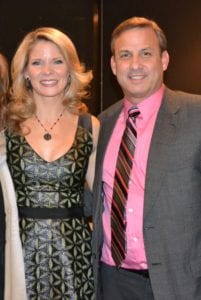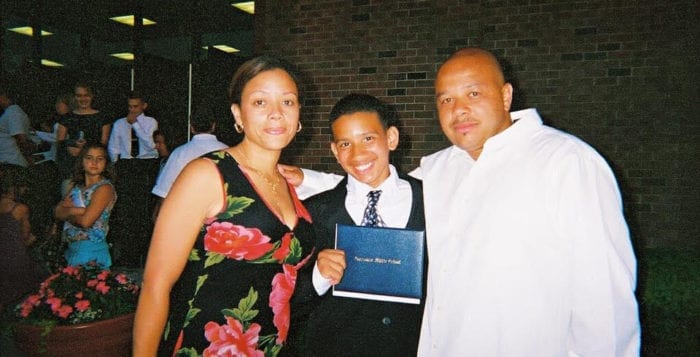By Rita J. Egan
The musicians of the Stony Brook University Orchestra, consisting of 70 undergraduate students, are tuning up their instruments. On Feb. 28 at the Staller Center, they will present their Annual Family Orchestra Concert, The Magic of Music, featuring pianist Emily Ramonetti, winner of the school’s 2016 Pre-College Concerto Competition.
Previously called the Annual Family Concert, university conductor Susan Deaver said this year the word “orchestra” was added to the title of the event so those attending will have a better understanding of the type of music featured in the show when purchasing tickets. Deaver said the one-hour concert includes short pieces and is a great way to introduce orchestral music to children who may be attending this type of performance for the first time. She also does her best to choose music that people of all ages will enjoy, and priced at $5, tickets are affordable so everyone in the family can easily attend.

The conductor said the focus on shorter pieces allows the orchestra to demonstrate a variety of numbers from various composers from different countries as well as centuries. Plus, during the show each of the sections — woodwinds, strings, brass and percussion — are featured. The hope is for the audience to get a well-rounded orchestral experience. “They get the maximum amount and variety of orchestra music in one hour as possible,” Deaver said.
Mozart’s Overture to the “Magic Flute,” which will be performed on Feb. 28, influenced this year’s theme, The Magic of Music, according to the conductor. “Always, music has some magic to it. It’s such a universal language. Something is, I think, so magical and wonderful about the sounds of the music and instruments of an orchestra,” Deaver said.
The concert will include Saint-Saens’ “Danse Bacchanale” and a tribute to Leonard Bernstein with selections from “West Side Story,” according to Deaver. She said the concert will open with “Festival Prelude” composed by Alfred Reed. “It’s brilliant orchestration. It’s short, it’s just a perfect opener,” the conductor said.
Deaver’s wish for the annual event is that everyone in attendance from the young children to the grandparents will gain a greater appreciation for orchestral and classical music. During the concerts, the conductor said she and the orchestra members always interact with the audience by asking them questions in hopes that they will feel more involved with the show. “I think it helps them break down any sort of barriers, because they feel part of the concert, too, because they are,” she said.
As for featured pianist, Ramonetti will be playing the 1st movement of Shostakovich’s Piano Concerto No. 2. A member of the university’s pre-college program since 10th grade, she won the 2016 Stony Brook University Pre-College Concerto Competition right before Thanksgiving. Deaver said at the competition the young pianist “was very well prepared, very musical.”
The senior at Northport High School has fit right in with the orchestra during rehearsals. “She’s been great. She’s a very mature, musically prepared musician. She already had it memorized from the competition, so then when she came to rehearsal, she fit in right way. She did really great. So it’s been our pleasure to work with her,” the conductor said.
Ramonetti, who has studied piano since she was three years old, said she realized she had a passion for music in fifth grade when the theme of the school’s yearbook was “We Dream Big.” “My dream that I put in the yearbook was to be a performer and travel around the world,” she said.
The pianist, who is also a violinist and composer, is enjoying rehearsing with the orchestra, and while in the past she has participated in performances, including playing background parts for her school orchestra, she admits that rehearsing with the college ensemble is different. “It’s definitely a much bigger sound than just rehearsing with a second piano,” she said.
Her performance piece was featured in the Disney classic “Fantasia,” and she explained that Shostakovich composed it in the 20th century. “It’s very, very difficult, very virtuosic,” she said. The teenager is looking forward to performing with the orchestra and presenting the concerto to the audience. “I hope they’ll see how much I love this piece, and how much I love performing it with this orchestra,” Ramonetti said.
Stony Brook University’s Staller Center for the Arts, 100 Nicolls Road, Stony Brook will present The Magic of Music on Tuesday, Feb. 28 at 7:30 p.m. on the Main Stage. Tickets are $5 for all ages and are on sale at the center’s box office, 631-632-ARTS (2787). For more information about the University Orchestra, visit www.stonybrook.edu/music or call 631-632-7330.










 You also write in the book how Colette learned from “The Oprah Winfrey Show” that she had the “disease to please” syndrome. How did you overcome worrying about what everyone thought?
You also write in the book how Colette learned from “The Oprah Winfrey Show” that she had the “disease to please” syndrome. How did you overcome worrying about what everyone thought? 

 Believe it or not, the idea for the story actually came about because of a problem we had with our original logo for the foundation. The first 20,000 cards we printed had a picture of Rees dressed like Superman on the front. We were informed that using the image of Superman, regardless of who was in the costume, was a trademark infringement and could cause legal issues. We were devastated by this, and I struggled with how I could come up with a new logo that so perfectly fit our mission like the “Superman Rees” picture did. Then, out of the blue, the idea hit me: Rees loved tractors. It was one of the very few words he could use, and every time he saw one he would get excited and yell out “TRAKTA!!!” So, I realized that should be the focus.
Believe it or not, the idea for the story actually came about because of a problem we had with our original logo for the foundation. The first 20,000 cards we printed had a picture of Rees dressed like Superman on the front. We were informed that using the image of Superman, regardless of who was in the costume, was a trademark infringement and could cause legal issues. We were devastated by this, and I struggled with how I could come up with a new logo that so perfectly fit our mission like the “Superman Rees” picture did. Then, out of the blue, the idea hit me: Rees loved tractors. It was one of the very few words he could use, and every time he saw one he would get excited and yell out “TRAKTA!!!” So, I realized that should be the focus.

 Despite a troubled youth, Wright reveals in his first book, “Voice for the Silent Fathers,” that his toughest obstacle in life so far was accepting the fact that his son was gay. Now 12 years into a 45-year sentence for conspiracy to distribute drugs, the author has spent the last few years using his time in prison to work on his issues and relationship with his son by writing. Due to the experience, which he describes as emotionally therapeutic, many of his fellow inmates have dubbed him “Gangster Turned Guru.”
Despite a troubled youth, Wright reveals in his first book, “Voice for the Silent Fathers,” that his toughest obstacle in life so far was accepting the fact that his son was gay. Now 12 years into a 45-year sentence for conspiracy to distribute drugs, the author has spent the last few years using his time in prison to work on his issues and relationship with his son by writing. Due to the experience, which he describes as emotionally therapeutic, many of his fellow inmates have dubbed him “Gangster Turned Guru.”









